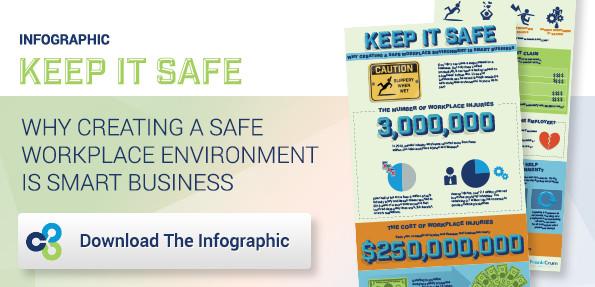 Working in cold weather can harm the human body just as much as the heat. Having prolonged exposure to cold, wet and windy conditions is dangerous, and employees should be aware of the health risks involved.
Working in cold weather can harm the human body just as much as the heat. Having prolonged exposure to cold, wet and windy conditions is dangerous, and employees should be aware of the health risks involved.
This remains true even if temperatures are above freezing, especially when
calculating wind chill temperature, which results in a dip well below the “air temperature.”
In this blog, we are going to cover some of the hazards from cold and windy conditions, and what measures you can take to keep your employees safe.
Cold Weather Hazards to be Aware of
Similar to our heat and humidity article, it is important to understand the effects that cold weather can have on the body, and the health risks that can happen as a result. Some of the most common health risks from working in the cold include:
- Hypothermia: when the victim’s core body temperature drops significantly below normal
- Frostbite: a skin and underlying tissue injury that occurs due to long-term exposure to extreme cold, and it goes from “pins and needles” to numbness or pain
- Trench foot: caused by prolonged exposure to cold and wet temperatures, and can occur as high as 60°F if feet are wet for a long period of time (OSHA)
Long-term exposure to the cold can cause cold stress, which can lead to serious health problems, may cause tissue damage and even death. Also keep in mind wind chill can make exposed skin feel the effects of colder weather than what the temperature indicates. OSHA’s guide on cold stress includes this example:
“…when the air temperature is 40°F, and the wind speed is 35 mph, the effect on the exposed skin is as if the air temperature was 28°F.”
Ways to Prevent Hazards From Occurring
Employers should take proper precautions to ensure the safety of their employees, including:
- Provide a warm shelter to allow employees to take breaks and warm up
- Be aware if any workers take medications, or have illnesses such as diabetes, high blood pressure or cardiovascular disease, as they are at increased risk
- Have employees wear multiple layers of clothing and wear face masks or scarves in windy conditions
- Know the wind chill at all times
- Inspect work areas for hazards such as ice, as it could cause a slip and fall
- Educate your employees on the risks from working in the cold
Educating Your Employees About the Cold
Take the necessary time to teach your employees about cold hazards and risks; doing so could save their life, or someone else’s. Employers should ensure their employees know the signs and symptoms of cold stress, as well as how to respond, treat and prevent illnesses. Some examples of this are:
- Encouraging employees to drink warm, sweet beverages and avoid drinks with caffeine or alcohol
- Taking frequent breaks in a warm shelter
- Making sure higher-risk employees can work in the cold – obtain a release from their medical provider
- Eating warm, high-calorie food such as pasta dishes
The Takeaway
Are you and your employees ready for the cold? Acknowledging these cold weather conditions and risks can prevent injuries for your employees. By taking the proper steps to manage the cold and investing in the education of your employees, you will see fewer injuries from cold stress and wind chill.












